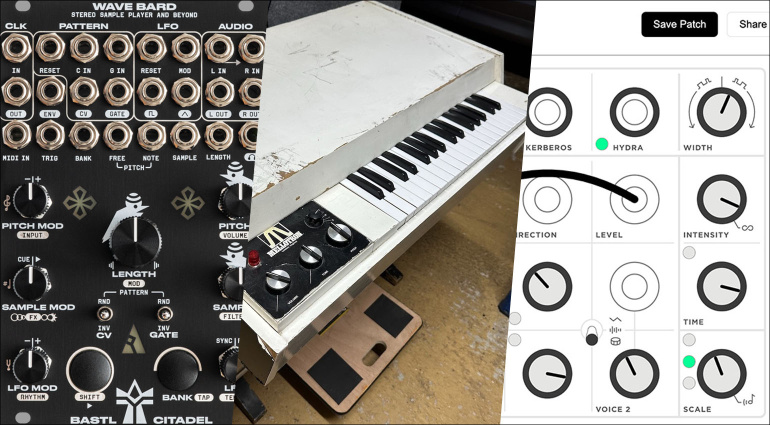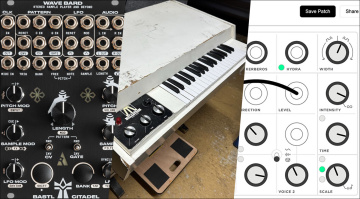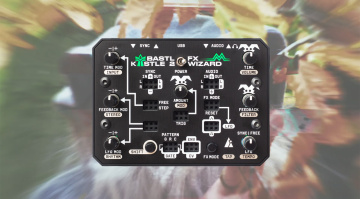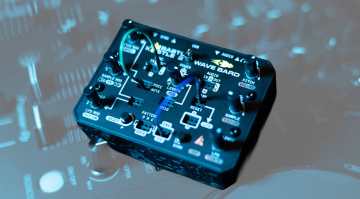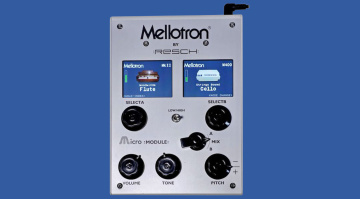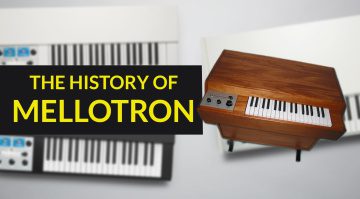Elton John’s Mellotron Up for Auction, CITADEL, Novachord: Synth Journal
In this week’s Synth Journal: The Bastl Instruments Kastle series goes Eurorack, a handy web app makes sure you’ll never forget a patch again, and Elton John’s Mellotron goes up for auction.
Synth Journal
Bastl Instruments CITADEL: The Kastle 2 Series Goes Eurorack
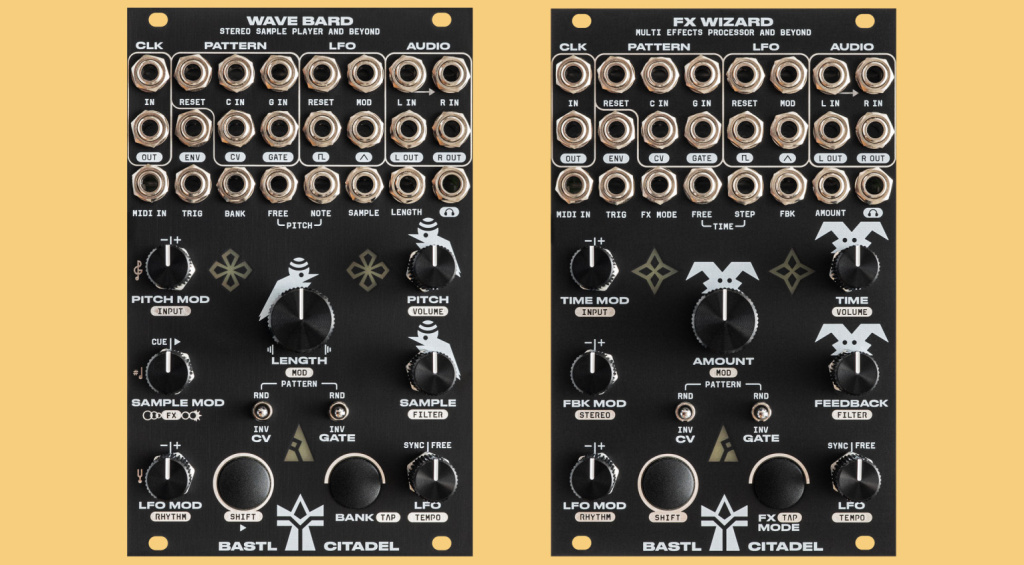
The open-source architecture of the Bastl Instruments Kastle series encourages experimentation, including ports to different formats. And the community didn’t need to be told twice. Various tinkerers developed Eurorack adaptations of the first-generation Kastle instruments—Kastle and Kastle Drum—, which became known as EuroKastle.
For the second generation of Kastles, Bastl Instruments have now decided to make their own in-house EuroKastle versions! The new CITADEL series of modules lets you add the Kastle Wave Bard sample player and Kastle FX Wizard effects module to your Eurorack. And that makes a lot of sense, because the semi-modular Kastle series thrives on creative patching.
Both CITADEL modules are based on the same hardware platform, so you can swap out the firmware to turn one module into the other. In other words, you only need to buy one module to own both, a concept we’ve seen before from manufacturers such as Noise Engineering. And it gets even better: the modules come with reversible front panels with Wave Bard on one side and FX Wizard on the other. Future developments on the Kastle 2 platform will of course also be supported.
The CITADEL Wave Bard module (which can be turned into FX Wizard by flipping the front panel around and installing the firmware) is now available from Thomann* for $243 / £221 / €245. If you prefer the standalone versions, those are of course still available.

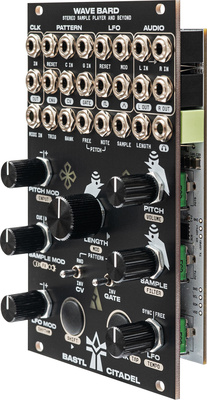

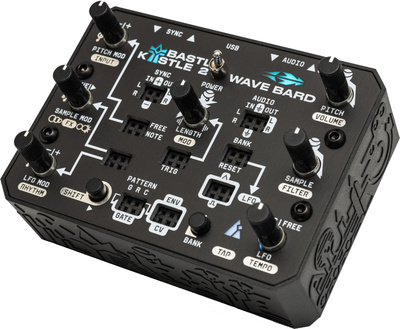

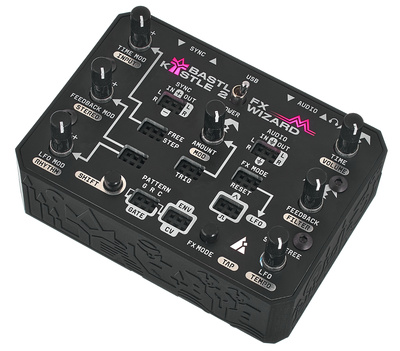
synthpatch.io: Never Forget a Patch Again!
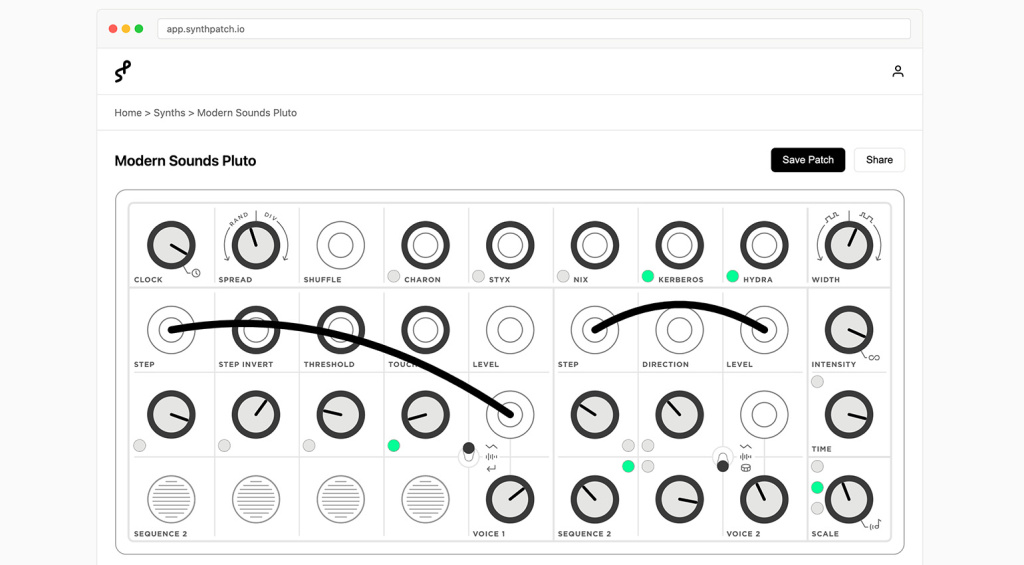
The renaissance of analog synths has brought back a long-forgotten problem: how can you make sure you’ll remember patches and settings on synths that don’t have patch memory? In the past, people made handwritten notes on paper or kept a folder full of Polaroid pictures. Today, many rely on taking photos using their phones, but those have a tendency to vanish among all the vacation snapshots and cat pics—somehow, they’re always impossible to find when you need them the most.
synthpatch.io promises to remedy this. The website offers a growing library of virtual replicas of many popular synths, letting you enter and save your settings for knobs, switches, patch connections, and even sequences. You can also add notes and even upload an audio file so that you can audition patches based on their sound.
But that’s not all. synthpatch.io also lets you organize your patches into collections or categories and tag them so that you can find the right patch quickly when needed. You can even share patches with the community. Neat!
Discover the Hammond Novachord with Marc Doty
The Hammond Novachord from 1939 is considered the world’s first commercially available polyphonic synth. Decades before synths became a mainstream phenomenon, it anticipated many elements that would later become integral parts of synth technology, such as filters, divide-down oscillators, and envelope generators. Yet, from today’s perspective, it’s rarely thought of as being a true synth—probably because it lacked voltage control. Nevertheless, the Novachord was without a doubt groundbreaking for its time.
If you’ve got an hour to spare, check out this video by none other than composer and synth historian Marc Doty and delve into the exciting history of this pioneering instrument. The perfect distraction for a rainy fall weekend!
Don’t Go Breaking My Heart: Elton John’s Mellotron is up for Auction
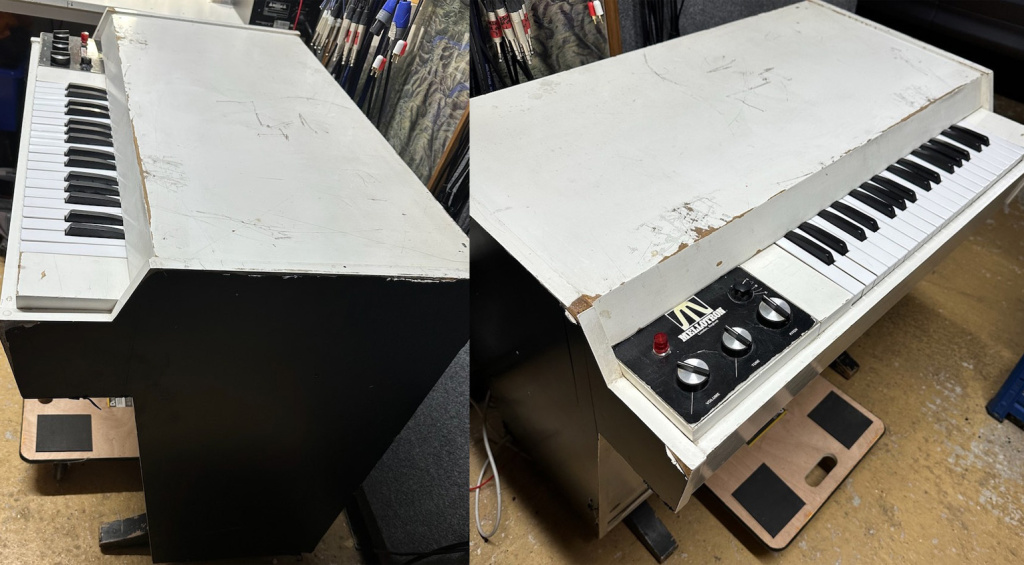
Here’s your chance to own a piece of music history! Elton John’s Mellotron M400S went up for auction on Vemia. It comes complete with three tape frames that were specially made for Elton, all featuring the classic Flute, 3 Violins, and Cello ADT sounds.
It looks like Elton John took his Mellotron on the road quite a bit – the outside is in pretty rough shape (or what they call “near good”) –, but Vemia says it’s been serviced “into decent playable condition”. A working vintage Mellotron is a rarity in and of itself, not to mention Elton John’s!
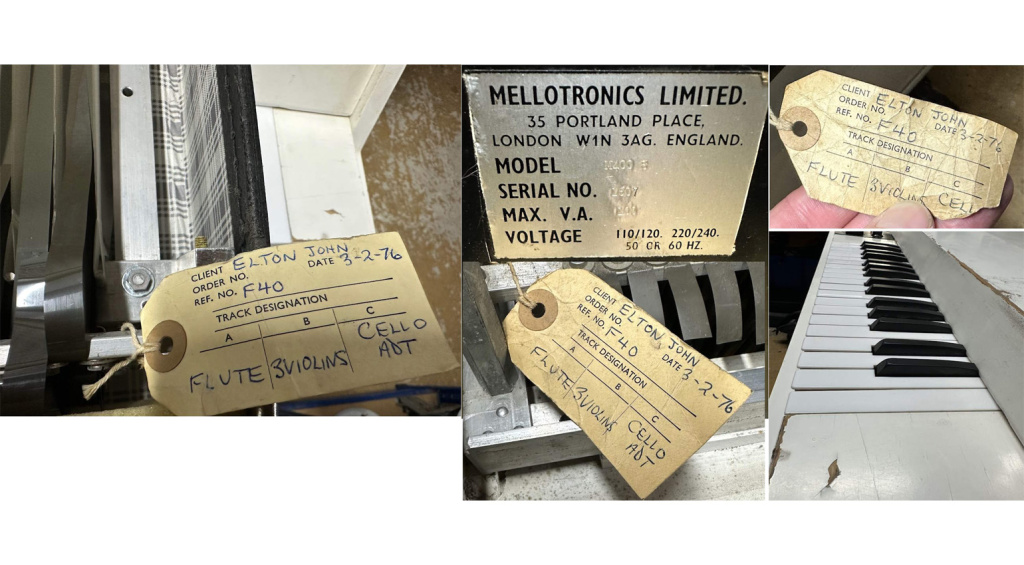
While I doubt that Elton’s Mellotron will fetch an amount anywhere near Freddy Mercury’s piano or Eric Clapton’s Stratocaster, I think it’s safe to say that you’ll need to be prepared to pay a bit more than for a modern-day Mellotron M4000D*.

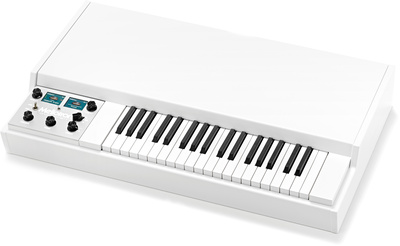

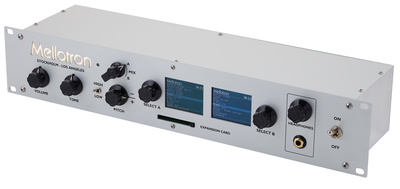

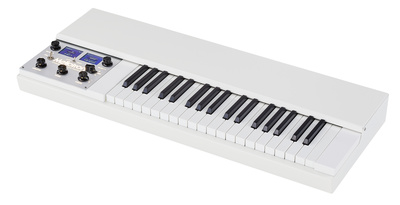
*This post contains affiliate links and/or widgets. When you buy a product via our affiliate partner, we receive a small commission that helps support what we do. Don’t worry, you pay the same price. Thanks for your support!
 4,0 / 5,0 |
4,0 / 5,0 | 